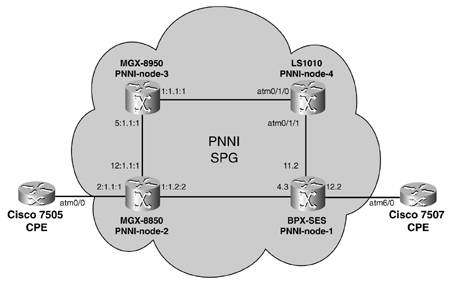In this crazy world of telecommunications, understanding the hardware that bridges customers to their service providers is crucial. This is where Customer Premises Equipment (CPE) comes into play. CPE refers to any telecommunication equipment located on the customer’s premises and is integral to accessing various communication services. This guide will explore the diverse world of CPE, its types, functionalities, and the significant role it plays in modern telecommunications networks.
Table of Contents:
- What is Customer Premises Equipment (CPE)?
- Types of Customer Premises Equipment
- Functionalities of CPE
- CPE in Modern Telecommunications
- References

1. What is CPE (Customer Premises Equipment)?
Customer Premises Equipment, or CPE, in telecommunications terminology, is any telecommunications equipment sold or leased by the carrier to the customer that is installed at the customer’s location.
Customer premises equipment (CPE) is typically installed to originate, route, or terminate telecommunications between the customer premises and the central office (CO) of the carrier or telco from which the service is leased.
Some examples of customer premises equipment include telephones, modems, CSU/DSUs (Channel Service Unit/Data Service Units), Private Branch Exchanges (PBXs), and so on. Generally, the telecommunications service provider is responsible for the configuration and monitoring of the CPE.
Historical Context and Evolution
The concept of CPE has its roots in the early days of telecommunication, where the telephone companies owned all the equipment and leased it to customers. Initially, CPE was limited to basic telephones and switchboards. As technology progressed, the range of CPE expanded, and regulatory changes in many countries allowed customers to own their equipment.
The advent of the internet brought a significant evolution to CPE. Modems and routers became commonplace in homes and businesses, enabling access to internet services. Over time, as technology advanced, CPE evolved to include more sophisticated devices capable of providing a range of services like high-speed internet, VoIP (Voice over Internet Protocol), and wireless connectivity.
2. Types of Customer Premises Equipment
Residential CPE: Modems, Routers, Phones
- Modems: These are devices that modulate and demodulate signals for internet connectivity, crucial for translating digital data from a computer into a format suitable for transmission over telephone or cable lines.
- Routers: Routers play a key role in directing internet traffic between the home network and the internet, providing connectivity to multiple devices either wirelessly or through wired connections.
- Phones: In the context of CPE, this includes both traditional landline phones and VoIP phones, which use internet connections for voice communication.
Business CPE: PBX Systems, Enterprise Routers
- PBX Systems: Private Branch Exchange systems are private telephone networks used within a company, allowing for free calls between users in the company and providing a number of features like voicemail, call transfer, and conferencing.
- Enterprise Routers: These are more robust than residential routers, designed to handle larger volumes of traffic and offer advanced features like enhanced security, traffic management, and support for multiple network protocols.

Advanced CPE: IoT Devices, Smart Home Systems
- IoT Devices: Internet of Things devices, such as smart thermostats, security cameras, and home automation controllers, are becoming increasingly common as CPE. They connect to the internet to offer advanced functionalities like remote control and monitoring.
- Smart Home Systems: These encompass a range of devices that automate and control home functions like lighting, temperature, and security systems. They often integrate with a central hub or app for unified control.
The evolution and diversification of CPE reflect the rapid development of technology and the growing demand for advanced telecommunication services in both residential and business environments.
3. Functionalities of CPE
Connectivity and Access
- Connectivity: The primary function of CPE is to provide connectivity to the telecommunications network. This includes establishing a physical link to the service provider, whether through a telephone line, fiber optic cable, or wireless connection, enabling access to various services such as the Internet, VoIP, and TV broadcasting.
- Access: CPE serves as the entry point for customers to access a wide range of telecommunications services. It plays a crucial role in determining the speed, quality, and reliability of these services. Advanced CPE devices support high-speed internet access, essential for today’s bandwidth-intensive applications.
Interface and Integration
- Interface: CPE acts as the interface between the customer’s internal network and the service provider’s infrastructure. This includes translating signals, managing IP addresses, and routing data to appropriate devices within the customer’s network.
- Integration: Modern CPE devices are designed to seamlessly integrate with a variety of in-home or in-office devices and systems. This includes compatibility with different operating systems, support for various network standards, and the ability to work with a range of peripheral devices.
Control and Management Features
- Control: Many CPE devices offer users control over their network settings and configurations. This can include setting up Wi-Fi networks, managing guest access, configuring security settings, and optimizing performance.
- Management Features: Advanced CPE devices often come equipped with software tools for network management. These tools can provide diagnostics, monitor usage, control bandwidth allocation, and update firmware for enhanced performance and security.
4. CPE in Modern Telecommunications
Role in Broadband and Internet Services
- Broadband Access: CPE is integral in providing broadband internet access to consumers and businesses. Devices like modems and routers are essential for connecting to high-speed internet services, enabling activities such as streaming, gaming, and telecommuting.
- Quality of Service: The performance of CPE directly affects the quality of internet services. High-quality CPE can enhance internet speed, reduce latency, and improve overall network reliability.
Impact on Cloud Computing and VoIP
- Cloud Computing: As cloud computing becomes more prevalent, the role of CPE in ensuring a reliable and secure connection to cloud services is more critical than ever. Efficient CPE helps in minimizing downtime and ensuring seamless access to cloud-based applications and data storage.
- VoIP Services: CPE such as VoIP adapters and routers enable the use of internet-based voice services. These devices convert analog voice signals into digital data, allowing for clear, cost-effective communication over the internet.
Adaptation to IoT and Smart Technologies
- IoT Integration: Modern CPE is increasingly designed to support IoT devices. This involves managing multiple connections, ensuring secure communication, and providing the necessary bandwidth for IoT applications.
- Smart Home and Business Applications: CPE plays a pivotal role in the functioning of smart home and business systems. It connects various smart devices to the internet and to each other, facilitating automation and control of lighting, security, HVAC systems, and more.
In summary, the functionalities of CPE have expanded significantly with advancements in technology. Today’s CPE not only connects users to a wide range of telecommunications services but also integrates, controls, and manages an increasingly complex and interconnected digital environment.
5. References
- “Telecommunications Essentials” by Lillian Goleniewski: Provides comprehensive insights into telecommunications systems, including detailed information on CPE.
- “Data Communications and Networking” by Behrouz A. Forouzan: Offers an in-depth look at networking concepts and hardware, with a focus on customer premises equipment.
- “The Essential Guide to Telecommunications” by Annabel Z. Dodd: Explores the evolution and impact of telecommunications technologies, including CPE.
- “Networking for Dummies” by Doug Lowe: A user-friendly guide that covers the basics of networking and includes practical information on CPE.
- Manufacturer’s Whitepapers and Technical Guides: For specific details on the latest CPE devices, consulting whitepapers and technical guides from manufacturers can be extremely beneficial.
- Network Encyclopedia YouTube Channel: What is CPE?